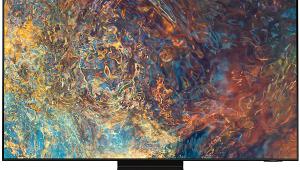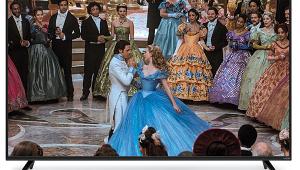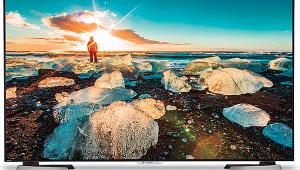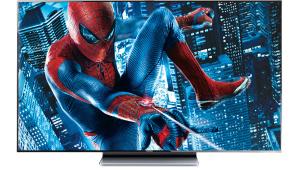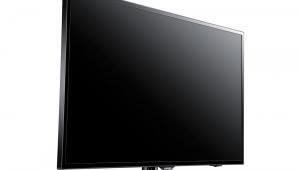Test Report: Panasonic TC-L55WT50 3D LED LCD HDTV Page 2
Setup
The L55WT50’s menus remain unchanged from other recent Panasonic TVs. They lack the colorful, swoopy flash of Samsung or LG TV menus, but they get the job done. What they lack in surface substance, they make up for in depth, with extensive color management and color temperature controls. One note: If you’re not into seeing the Viera Connect Banner, you can go to the Setup section of the main menu and find Advanced Setup to disable it.
Frustratingly, the L55WT50’s Cinema mode locks you into the Strong motion interpolation setting, giving film-based content the ultra-smooth Soap Opera Effect (not my favorite thing). Even more bizarre, Cinema is the only mode that locks you out?of the motion interpolation control. (Game mode does as well, but in that mode it’s turned off.) This is too bad since the Cinema mode looks far better out of the box than the Custom mode, except for the motion interpolation. You have to go through the myriad settings (turning off, mostly) in Custom to get the L55WT50 TV back close to how it looks in the Cinema mode.
Performance
The most notable benefit to the Panasonic L55WT50’s In-Plane Switching technology is wide viewing angles. As I mentioned earlier, this is what sets it apart from other LCD flavors, and here Panasonic delivers. The image isn’t quite as perfect off-axis as your average plasma, but it’s so close that those with wide couches, or who throw lots of parties (with people standing, etc.), won’t be subjecting their friends and family in the cheap seats to sub-standard picture quality.
Color is another aspect where the L55WT50 shines. Out of the box, the primary and secondary colors are all pretty much spot-on. The menus allow you to get them even closer. Skin tones look good, and colors look realistic.
Motion blur, something all LCDs suffer from, didn’t appear to be a big deal here, even when I shut off all the motion interpolation. Video processing was really good: It picked up 3:2 pulldown with 1080i, and the rotating bar test pattern from the Spears & Munsil Benchmark disc showed jaggies only as the bar neared horizontal.
The Panasonic L55WT50 has a 1920 Back Light Scanning feature that applies an 8-phase scanning backlight to the set’s 240-Hz panel. The resulting mo- tion resolution is decent for an LCD: The WT50 seems to resolve just under 700 lines, but if you enable any of its Motion Picture Settings, that number jumps up to a full 1,080.
The L55WT50’s overall brightness is a strength, with a maximum light output of just over 105 foot-lamberts (ftL). However, an issue with this TV is its contrast ratio. Or, more specifically, the lack thereof. Despite all the varied adjustments, the best contrast ratio I could get out of the L55WT50 was a paltry 970:1. To put this number in perspective, Panasonic’s identically priced TC-P55VT50 plasma produced 13,900:1. And a Samsung 55EH6000 LCD I recently reviewed, which is half the Panasonic’s price, was capable of 4,352:1. When I set the L55WT50 for the same brightness as the VT50 plasma (roughly 40 ftL), the L55WT50 had a “black” level of 0.042 ftL. The VT50, meanwhile, was 0.003 ftL. Yep, 14 times less, and it shows. The Samsung, at 36 ftL, had a black level of 0.009 ftL. The TC-L55WT50’s image looked flat with shadowy content.
